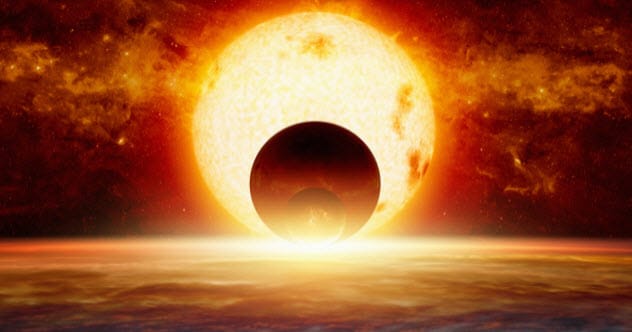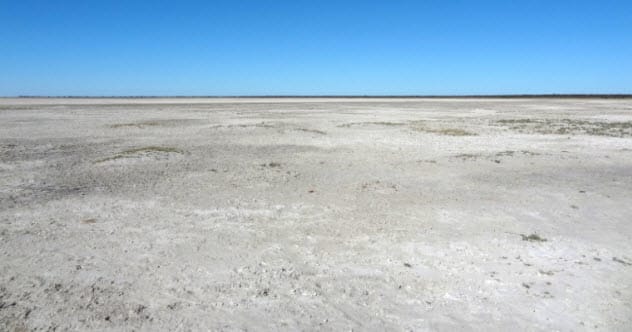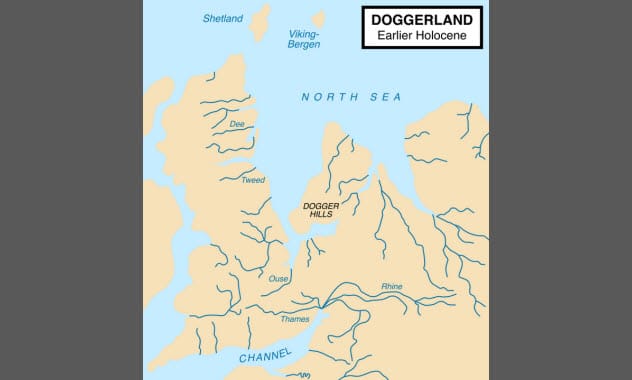Have you ever wondered how different our world could be if history, or even prehistory, had taken a slightly different turn? We often think about human decisions, but what if the Earth itself had formed or evolved differently? Let’s dive into some fascinating “what if” scenarios about our planet’s geography and climate, exploring how even small changes could have led to a dramatically different Earth.
10. What If Pangaea Had Never Broken Up?

Millions of years ago, all the world’s continents were one giant landmass called Pangaea. Imagine if it never split apart! Our world would likely be far less diverse biologically. Why? Because new species often develop when groups get separated by geography, like oceans or mountains. With one huge continent, there’d be fewer isolated spots for unique life to evolve.
The interior of this supercontinent would probably be extremely dry, as rain clouds wouldn’t travel far inland. Much of Pangaea would sit in the hot, equatorial regions, making summers about 20 degrees Celsius (36°F) hotter than ours. The vast Tethys Ocean on the other side would brew massive typhoons. In this version of Earth, mammals might thrive in wetter, tropical areas, while reptiles could dominate the vast arid zones, as mammals need more water. Intelligent life? Maybe not, as the stable environment might not have pushed evolution in that direction.
9. What If The Earth Had No Tilt?

Our seasons happen because Earth is tilted on its axis by 23.5 degrees as it orbits the Sun. What if there was no tilt? Every day, everywhere, would have roughly 12 hours of daylight. The Sun would always be on the horizon at the poles. Weather would be much more stable. The far north and south would be in a constant winter. Equatorial regions would be steamy, rainy tropics. Moving away from the equator, you’d pass through zones of perpetual summer, then spring/autumn, and finally into an icy, uninhabitable polar region.
Some scientists think this tilt, possibly caused by a giant space collision that also formed our Moon, was crucial for life. Without it, our planet might not even hold onto its atmosphere! Gases could boil away at the super-hot equator and freeze solid at the poles. If life did survive, imagine farming without seasons. Tropical diseases would be rampant. And the Industrial Revolution? It might never have happened, as much of its early technology was driven by the need to heat homes in cold winters.
8. What If The Earth Had A Different Tilt Or Rotation?

Changing Earth’s tilt would dramatically alter climate. If Earth tilted a full 90 degrees, like Uranus, seasons would be extreme. One pole would point directly at the Sun, bathing that hemisphere in constant light and intense heat, while the other shivered in frigid darkness. Three months later, the equator would get 12 hours of sun, with the Sun rising in the north and setting in the south!
Life would struggle with yearly cycles of scorching radiation and deep freezes, though some hardy extremophiles might manage. Complex life would need serious hibernation or migration skills. Artist Chris Wayan imagined scenarios like “Seapole,” where poles are over water, creating a warmer, wetter Earth. His “Shiveria” puts ice caps over China and South America, making a colder, drier world, but with a tropical Antarctica! Flipping Earth upside down would reverse currents and winds, possibly making for a more fertile planet overall.
7. What If South America Was An Island Continent?

For about 160 million years, until roughly 3.5 million years ago, North and South America were separate. South America, much like Australia, was home to many marsupials (pouched mammals). It also had unique placental mammals like early camels, and the ancestors of armadillos and sloths. Interestingly, all living marsupials, including kangaroos, actually originated in South America! There were even carnivorous marsupials, like the “borhyaenoids,” resembling weasels or saber-toothed tigers.
When the Americas connected, mammals from the North spread south, outcompeting many native marsupials. If they’d stayed separate, South America might be as uniquely strange as Australia today. However, if early humans arrived, they might have brought placental mammals, leading to extinctions similar to what happened in Australia.
6. What If The Mediterranean Had Stayed Closed?

Around six million years ago, the Strait of Gibraltar closed, nearly cutting off the Mediterranean Sea from the Atlantic. The sea began to evaporate, leaving behind a massive, salty wasteland, a kilometer deep in salt! This “Messinian salinity crisis” wiped out most Mediterranean sea life. Eventually, the Atlantic broke through in the “Zanclean flood,” rapidly refilling the basin.
What if it never refilled? Humans might have reached Europe much earlier, simply walking across the dry, salty lowlands. Salt is vital, and civilizations in the region could have mined this vast deposit, perhaps boosting agricultural development in the West by making a crucial mineral readily available. However, with so much salt around, it might have been less valuable, and phrases like “worth their salt” could have been an insult!
5. What If There Were No Large Metal Deposits On Earth?

Metals are essential for us and for technology. Imagine a world where copper and other useful metals weren’t concentrated in easy-to-mine deposits. Stone Age tech would advance, but paths like mining, extensive trade, and complex social classes might have developed much slower, or not at all. Civilizations like those in ancient America show complex societies can exist without much metal, but their art and economies might seem plain if gold and silver were also scarce.
In Mesoamerica, the lack of metals led to masterful use of obsidian, a volcanic glass sharp enough for scalpels. The Aztecs made obsidian-edged swords and tools. This sharpness even influenced their religious practices, making sacrificial bloodletting less painful than we might think. Without metals, perhaps Egyptian civilization would have expanded to control obsidian sources. It’s hard to say how advanced a non-metal society could become, but an industrial revolution as we know it would be impossible.
4. What If The Sahara Was Still Wet?

Until about 5,000 years ago, the Sahara was a green land of lakes and grasslands, home to hippos and giraffes. This “African humid period” allowed early humans to migrate out of Africa. If it hadn’t ended, and the Sahara remained lush, things would be very different. Large lakes in Libya and a much bigger Lake Chad supported civilizations that left behind tools and art, now buried by sand.
A green Sahara would have meant no desert barrier between sub-Saharan Africa and the Mediterranean. This could have led to more trade, and more genetic, linguistic, and cultural mixing between Africa and Eurasia. Cities and governments might have developed there early on. Potentially, the Sahara could have hosted a large, unified culture, profoundly impacting the development of civilizations in Europe and the Mediterranean.
3. What If There Was No Gulf Stream?

The Gulf Stream is a powerful ocean current that carries warm Caribbean water across the Atlantic, keeping northwestern Europe much warmer than it would otherwise be (think Canada’s temperatures at similar latitudes). This system has shut down before. If it hadn’t restarted after the last ice age, around 11,700 years ago, northwestern Europe might have stayed frozen, with a larger Arctic ice cap.
This icy region would have been unsuitable for farming and the rise of civilizations as we know them. Western cultures might have been confined to the Mediterranean and Middle East. On the bright side, it might have been too cold for invasions by groups like the Huns or Mongols! If the Gulf Stream returned after civilizations developed in the south, a vast new frontier would have opened up for settlement.
2. What If Doggerland Still Existed?

Up until about 8,200 years ago, a low-lying landmass called Doggerland existed in what’s now the North Sea, connecting Britain to mainland Europe. It was a land of hills, forests, and marshes, home to Mesolithic hunter-gatherers. Climate change gradually flooded it. The final part, around Dogger Bank, was likely wiped out by a massive tsunami from the Storegga Slide, a huge underwater landslide.
But what if Doggerland, or part of it, survived? Its inhabitants would have influenced European civilization. Neolithic farmers and later Celtic peoples might have settled there. Perhaps Germanic tribes would have expanded onto it, creating a cultural bridge between Norse and British cultures. A surviving Doggerland would be very vulnerable to today’s rising sea levels, making it a vocal advocate for climate action.
1. What If There Had Been Slightly Less Ice During The Ice Ages?

What if ice sheets during the ice ages hadn’t spread so far south in North America, or if the Scottish and Scandinavian ice sheets never merged? This would have had huge geographical consequences. The Missouri River might still flow into Hudson Bay. The Great Lakes and Ohio River might never have formed. And importantly, the English Channel might not exist!
In our world, merging ice sheets in Europe created a massive lake that overflowed, carving out the English Channel. Without that, a land bridge would still connect England to Europe, drastically changing British history, migration, and defense. In North America, different river systems, like the ancient Teays River, would exist. Niagara Falls wouldn’t be there. Colonization patterns by Europeans would have been very different, likely slower, and perhaps undertaken by different cultural groups than we know.
These scenarios show just how much our world is shaped by ancient geological and climatic events. A few small changes in the distant past, and Earth today could be a place we’d barely recognize. It’s a humbling reminder of the powerful forces that have crafted our home.
Which of these “what if” scenarios do you find most fascinating? Do you have other geographical or climatic ‘what ifs’ you’ve pondered? Share your thoughts in the comments below!










